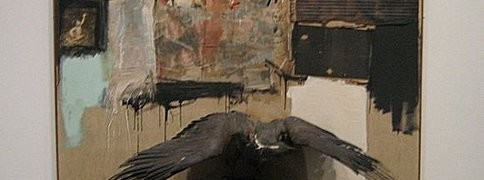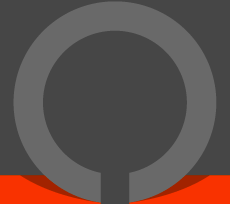
Robert – Canyon 1959
Combine painting: oil, pencil, paper, metal
photograph, fabric, wood on canvas, button, mirror,
stuffed eagle, cardboard box, pillow, paint tube.
This artwork called Canyon made by Robert Rauschenberg in 1959. When the first time I saw this artwork, the first attraction of my eyes is the real three-dimension which looks like a pillow. This artwork doesn’t like others that only have 2D painting or drawing. It is special that is combined with2D and 3D elements.
Also, the color is an important element of this artwork. It causes me able to feel the feelings that Robert Rauschenberg would like to show. Since the color is quite dark and grey on the upper side of the artwork. And the color at lower sider is lighter. It seems that the eagle will have a danger if it goes to another side.
For me, I appreciate for him that he can make a good use of the real things and the 2D hand drawing. After seeing this artwork, I find that most of artwork before 60s are only focuses on 2D hand drawing. Those artists pay attention on the structure and color’s attraction. But Canyon differs from the usual artworks that mostly have only one element of artwork. Rauschenberg uses some we may neglect in daily to be part of the artwork. It shows that the value of everything we can’t underestimate. Moreover, he takes a good use of the structure of exhibition that the artwork is hung on the wall. Then the pillow can be hold in the air to be more realistic.
The artist — Robert Rauschenberg is one of the important leaders of contemporary art. Rauschenberg was well known for his combine paintings, He thinks that art is not only limited in a specific time, place, and thing, but also everything that you can think about. Whenever he uses such objects as these in a « combine », Rauschenberg always respects their integrity, never altering their appearance to the point where function merely as formal shapes in the composition and never allowing them to serve merely symbolic ends. The objects and fragments come through relatively intact, with strong overtones of their life in the real world before they embarked upon their present life in art.
When I search the information about him, I find a part of interview that Robert Rauschenberg talked about artistic creation in 2000 New York Time: »For me art shouldn’t be a fixed idea that I have before I start making it. I want it to include all the fragility and doubt that I go through the day with. Sometimes I’ll take a walk just to forget whatever good idea I had that day because I like to go into the studio not having any ideas. I want the insecurity of not knowing, like performers feel before a performance. Everything I can remember, and everything I know, I have probably already done, or somebody else has. »
Due to Robert Rauschenberg’s unique thinking of combining concrete daily things and abstract oil painting, it makes an important change of art and the use of scrap metal. He let the traditional painting from the second element of the flat space bring into three-dimensional concept. Moreover, this is his main attitude of art that find creation foothold in the gap between life and art. His life holding open-minded, open attitude that drives him to not only put into the visual arts, and dance, technology, music, stage design, and even international artistic exchanges are to accomplish something.
Similarly, people usually only stay in the same stand but not willing to change and try. Since the first impressions are strongest, so they keep the same step but no progress. In fact, I know that breaking down the norm need courage because it may be opposed by other people who cannot accept the change. Yet, if we can try more, breaking down the rule limitation, an unthinkable result maybe appears ultimately. Canyon is a good example of it. It just likes a reflection of our daily life. I think that artwork is powerful thing to affect people’s mind without speak.



